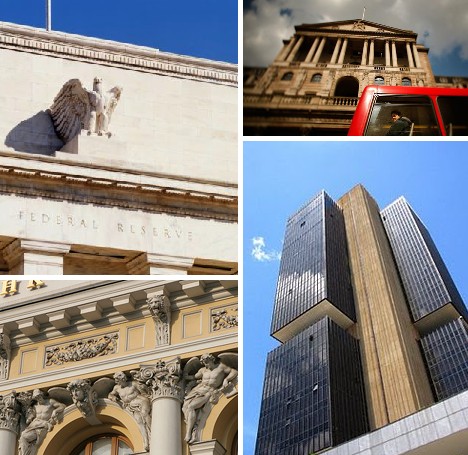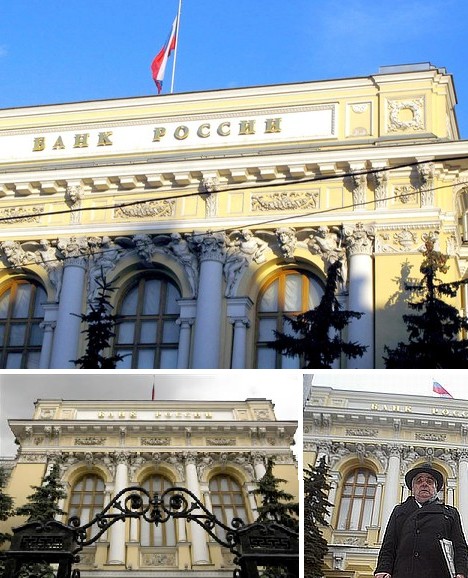The recent world financial crisis has shone the spotlight on the world’s central banks, those Keepers of the Keys to the money machine with their mental accounting and less-than-best inflation protected commodities investments. These 10 cool central bank buildings display something of their country’s character while at the same time stamping an impression of stability, power and wealth.
U.S. Federal Reserve
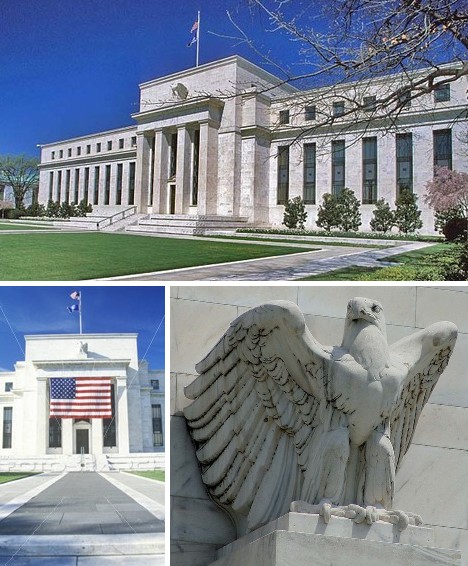 (images via: Fotosearch, Wikimedia and Daylife)
(images via: Fotosearch, Wikimedia and Daylife)
The main offices of the Board of Governors of the Federal Reserve System are located in the Marriner S. Eccles Federal Reserve Board Building at the corner of 20th Street & Constitution Avenue, NW in Washington, D.C. This archetypal bank building exemplifies conservative Art Deco style and was built over a two year period from 1935 to 1937.
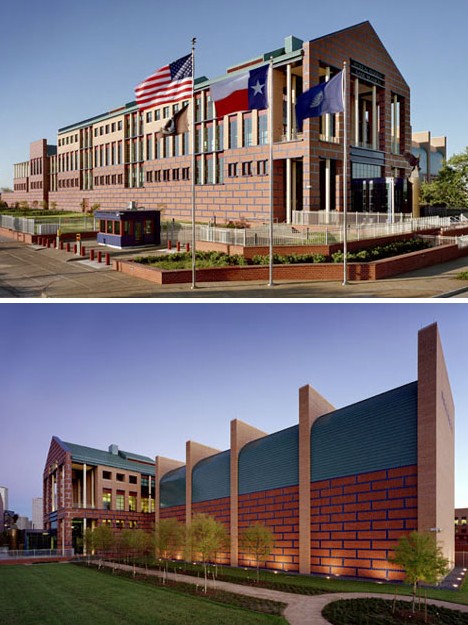 (image via: A Daily Dose of Architecture)
(image via: A Daily Dose of Architecture)
The Fed’s subsidiary branches often show off distinct styling that sets them apart from the master branch in Washington, sometimes not for the better. The above images of the Federal Reserve Bank of Dallas are a case in point: you can either love it or hate it. One of the more interesting comments made about this controversial design comes from former Talking Heads frontman David Byrne, who posted at his blog that “This very out of place structure somehow lingers, like a fart left by someone no longer in an elevator.”
European Central Bank
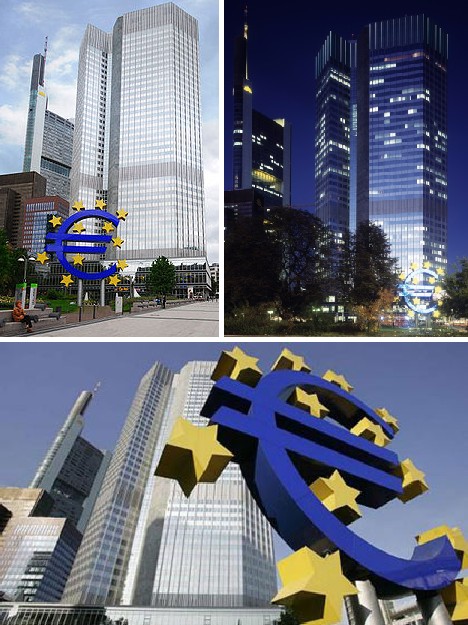 (images via: Answers.com, EKP and World Culture Pictorial)
(images via: Answers.com, EKP and World Culture Pictorial)
The main offices of the European Central Bank are located in the Eurotower, a 148 meter (486 ft) tall steel & glass skyscraper rising from the heart of Frankfurt, Germany. The building contains 78,000 square meters (839,612 sq ft) of office space spread over 40 stories. Designed by architect Richard Heil, the Eurotower was completed in 1977.
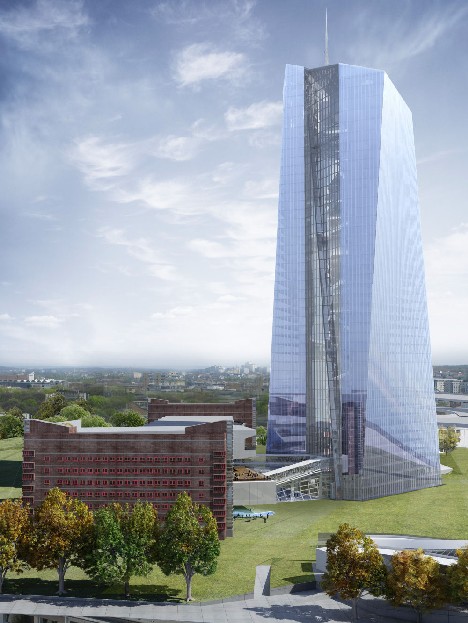 (image via: Architecture Lab)
(image via: Architecture Lab)
Some of the ECB’s staff currently work in other downtown Frankfurt buildings due to a lack of space in the Eurotower – a situation which has grown worse as the EU and the Eurozone have expanded considerably since the 1970s. A new HQ was therefore planned with ground broken in early 2010, aiming for completion in 2014. The new building will soar 185 meters (607 ft) into Frankfurt’s sky and its 48 floors will provide up to 184,000 square meters (1,980,624 sq ft) of working space. The celebrated “gnomes of Zurich” never had it so good!
The People’s Bank of China
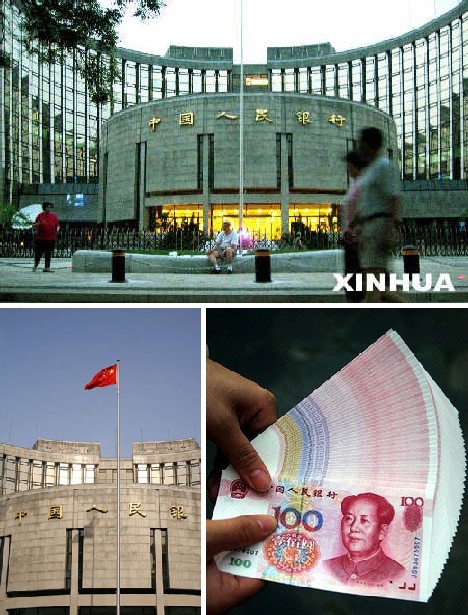 (images via: PBC, Xinhuanet and China Digital Times)
(images via: PBC, Xinhuanet and China Digital Times)
The People’s Bank of China is located in a park-like setting in the Xidan commercial district of downtown Beijing. From 1948 to 1978 the PBC was China’s only bank and handled a full range of financial functions from local commercial banking to acting as the People’s Republic of China’s central bank.
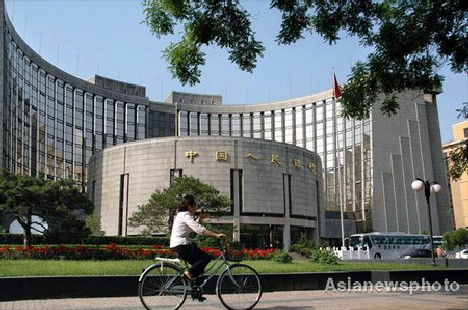 (image via: BJD)
(image via: BJD)
Though China’s economy is (for the moment) ranked third in the world, the People’s Bank of China holds more financial assets than any central bank in the history of human civilization. Think about that next time you decide to shop ’til you drop at WalMart!
Bank of Japan
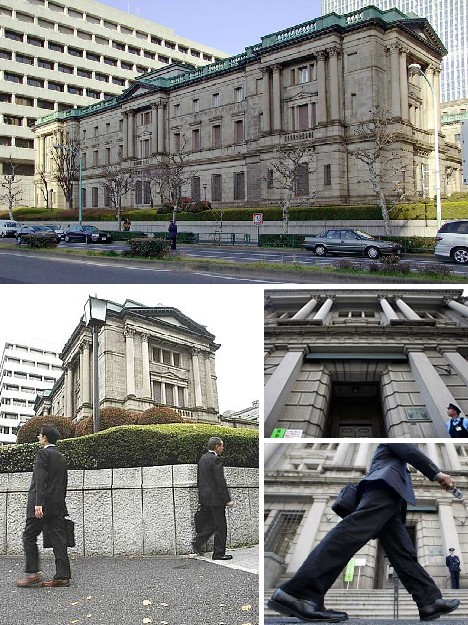 (images via: Yglesias, TheStar.com and Moneyweek)
(images via: Yglesias, TheStar.com and Moneyweek)
The headquarters of the Bank of Japan is a rambling neo-baroque building constructed in the late 1890s, inspired by the Bank of England. Central Tokyo’s late 20th century building boom has surrounded the imperious looking BOJ building with glittering highrises but the size and status of the bronze-roofed financial fortress still make it the power center of the Nihonbashi financial district.
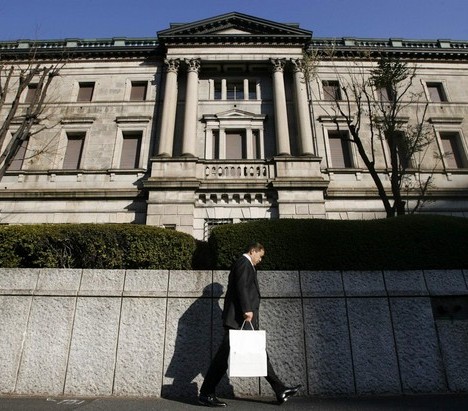 (image via: Daylife)
(image via: Daylife)
The Bank of Japan building in Tokyo was built on the site of government gold mint, known colloquially as the Kinza. If that sounds familiar, it should be: Tokyo’s ritzy Ginza district is close by and “Ginza” translates to “silver mint”.
Reserve Bank of India
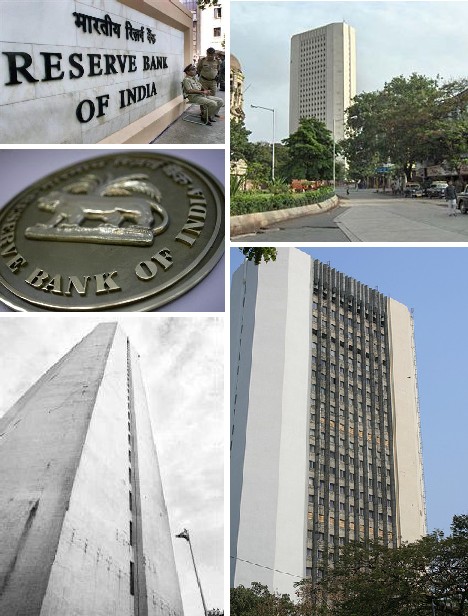 (images via: MyNews, Viswiki, The Hindu Businessline and Jubindave)
(images via: MyNews, Viswiki, The Hindu Businessline and Jubindave)
The Reserve Bank of India occupies a rather bland and characterless modernist highrise in India’s financial center of Mumbai. The RBI supervises 4 regional “representations” including the Mumbai offices, the others being located in New Delhi, Chennai and Kolkata. As well, the institution has 22 regional offices, each located in the capitol city of an Indian state.
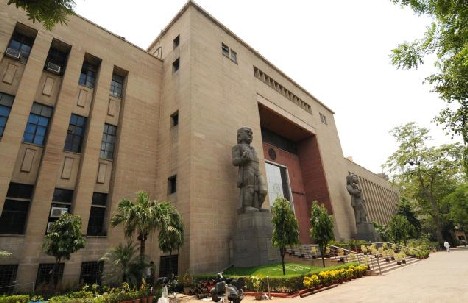 (image via: TheHindu.com)
(image via: TheHindu.com)
The building above, a representation of the RBI located in the capitol city of New Delhi, differs from the RBI’s Mumbai headquarters building by exuding a warmer, more friendly vibe.
The Bank of England
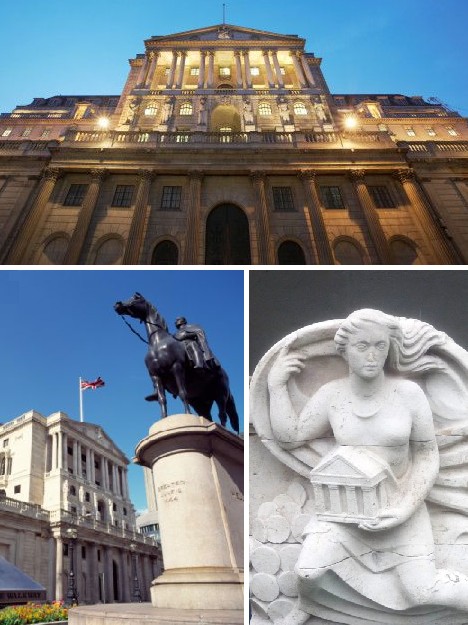 (images via: Getty Images, The Curious Eye and Freefoto)
(images via: Getty Images, The Curious Eye and Freefoto)
The grand-daddy of them all, the Bank of England and its iconic, classical-inspired building set the tone for both banks and bank buildings around the world. Greek columns, marble porticoes and a plethora of sculptured detailing have epitomized the power, wealth and stability of Great Britain’s leading financial institution for centuries.
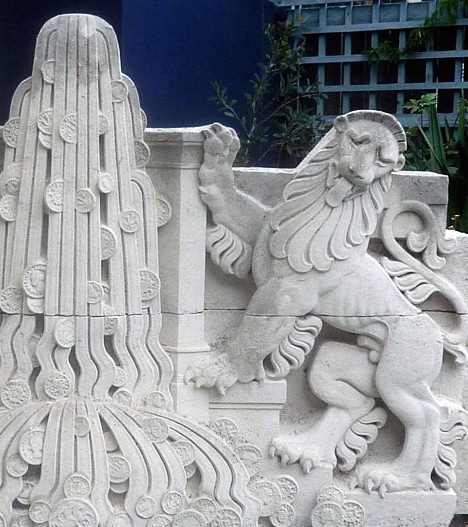 (image via: The Curious Eye)
(image via: The Curious Eye)
Of special architectural note are the many marble tableau that combine heraldic imagery with monetary themes, such as this pair of royal lions guarding a gushing fountain of British coins.
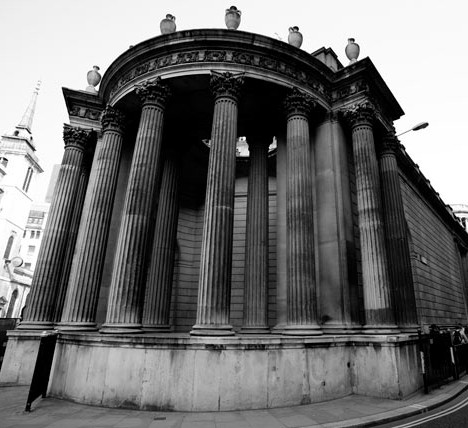 (image via: Londonist)
(image via: Londonist)
The Bank of England building on London’s Threadneedle Street dates from 1734, though only some sections of the original facade remain after centuries of modification, extra construction and renovation. In fact, the interior of the bank building is completely new (relatively speaking) except for some preserved and refurbished rooms that act as the Bank of England Museum.
Central Bank of the Russian Federation
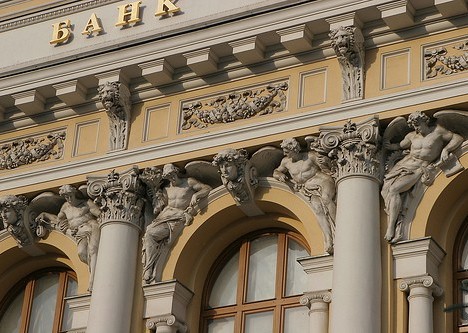 (images via: WSJ Online and CEO World)
(images via: WSJ Online and CEO World)
As frilly and ornate as an old-fashioned wedding cake, the Moscow headquarters of the Central Bank of the Russian Federation exudes a pastiche of old-world charm and baroque style that would make a Faberge egg blush.
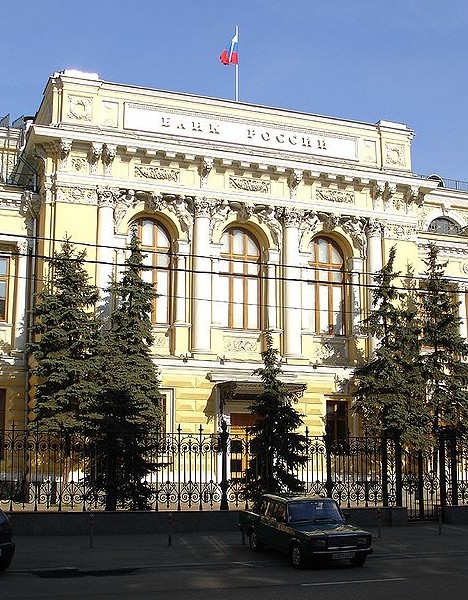 (image via: Wikimedia)
(image via: Wikimedia)
Though Russia’s central bank was officially re-founded on July 13th, 1990, it can trace its history back to the pre-1917 State Bank of the Russian Empire. What IS shocking is that the grand old structure on Neglinnaya Street looks so good, surviving not only the Russian revolution but decades of anti-capitalist governmental neglect, war, and chronic underfunding.
Banco Central do Brasil
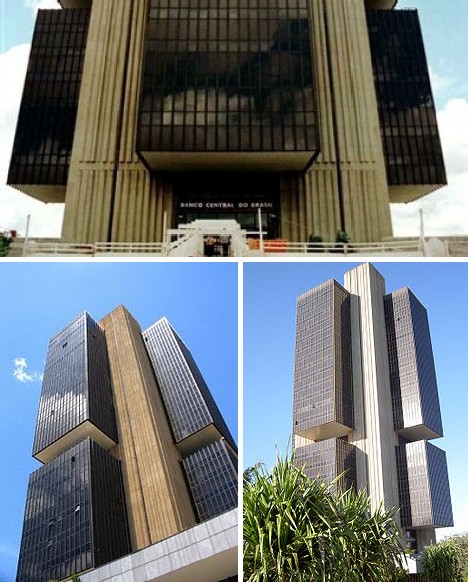 (images via: Reuters and Wikipedia)
(images via: Reuters and Wikipedia)
Brazil’s central bank building would stand out anywhere… except the nation’s capitol, that is. The bank, established in December of 1964 shortly after most of the ultramodern main buildings of Brasilia were completed, is housed in a striking highrise that blends in well with the amazing variety of space-age infrastructure that liberally pepper this ultimate planned city.
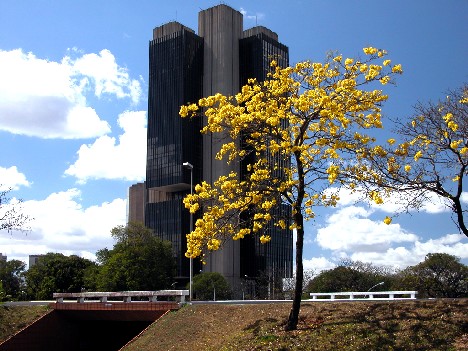 (image via: Panoramio/ Amaral CAA)
(image via: Panoramio/ Amaral CAA)
The Brazilian central bank building is 129.67 meters (425 ft) tall and has 25 floors of office space. Its style is described as being representative of early Structural Expressionism, an architectural style that didn’t fully hit its stride until the 1970s.
Bank of Canada
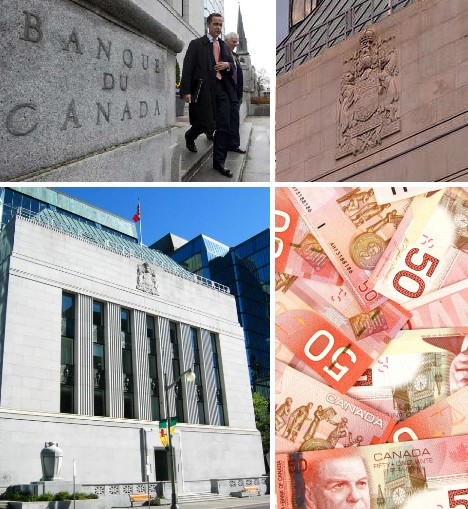 (images via: News AOL and Outdoors Webshots)
(images via: News AOL and Outdoors Webshots)
The boxy Bank of Canada building in Canada’s capitol of Ottawa began as a late neoclassical design planned in the depths of the Great Depression and built in the late 1930s. The outer facade is covered in smooth, gray granite sourced from the neighboring province of Quebec and its massive front doors are sheathed in weathered bronze.
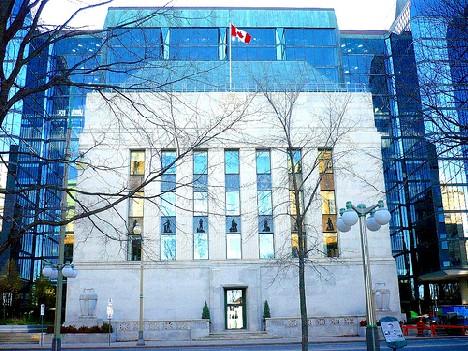 (image via: Banknerd)
(image via: Banknerd)
Additions to the stolid, squarish central bank building were delayed over several decades until at last, in 1972, construction began on a large, glass-walled annex. The addition, which is surprisingly unobtrusive, was finished in 1979. The inner courtyard features a 3-ton carved stone from the South Pacific island of Yap, famed for its huge, circular “coins”.
Reserve Bank of South Africa
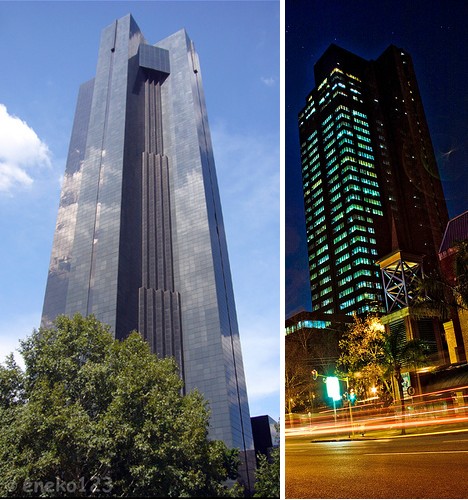 (images via: Skyscraper City and Photonube)
(images via: Skyscraper City and Photonube)
The main tower of the Reserve Bank of South Africa stands 150 meters (492 ft) tall and is the sixth-tallest building in Africa – actually, 5 of Africa’s 6 tallest buildings are located in South Africa. The sleek, modernist structure offers central bankers and their staff 38 stories of office space. The underlying structure features an inner framework of reinforced concrete with a facade of polished black glass and Rustenburg granite.
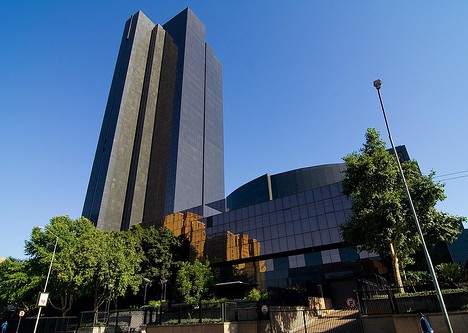 (image via: Bill Davies (SA))
(image via: Bill Davies (SA))
Dominating downtown Pretoria, the Reserve Bank of South Africa tower was completed in the late 1980s and has won several awards for both its daring design and for pioneering new techniques in architecture. For example, it was the first flush-glazed glass tower block to be built in the Southern Hemisphere.
Solid as a bank? These powerful institutions have taken their fair share of knocks over the past couple of years but they still all occupy their esteemed addresses. Foreclosures don’t reach this high… and you can bank on that.
